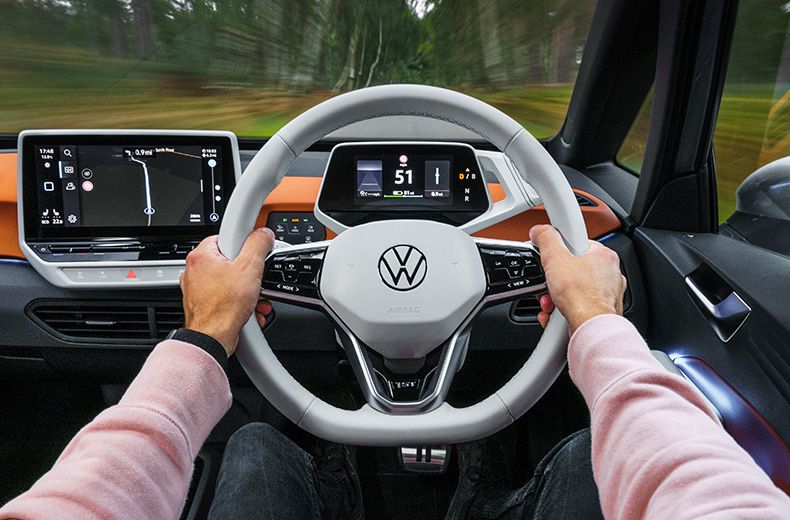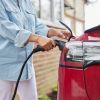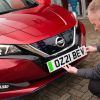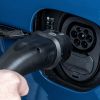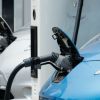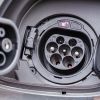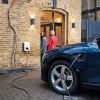Indeed, in many respects, electric vehicles (EVs) are actually easier to drive than conventional petrol or diesel cars. The simplicity of an electric motor does away with mechanical complexity, and simplifies some of the age-old quirks of driving.
This guide demystifies the process of driving an EV and explains how to get the most from one in regular use.
How to drive an electric car: the basics
The way you drive an EV is broadly the same with every model. Starting from the driver’s seat, press the ‘Power’ or 'Start' button on the dashboard to turn the car on - you'll likely get some sort of noise to signify the car is ready to drive, but it won't be the sound of an engine.
In some cars, such as Teslas, Polestars and Volkswagen's ID models, you won't need to press anything to turn it on. The simple act of plonking your backside in the driver's seat will wake the car up.
Next you'll want to put it into Drive, or Reverse if you need to - no different to what you'll do in an automatic car with an engine. Most electric cars do away with the physical action of heaving a gearlever into place, though, instead using a drive selector switch in the centre console.
Several electric car makers have relocated the drive selector to the dashboard. On the right-hand side of the instrument panel, twist the selector towards the windscreen to go forwards, and towards you for reverse. Other EVs may have a rotary dial, with gear markings around it. With these, just turn the dial to select forward or reverse.
As you set of you won't need to worry about stalling or selecting the right gear. Electric cars are single-speed, so there are no clutches to feather or gearchanges to feel.
They are also very smooth and quiet. The instant torque of their electric motors serves up swift acceleration (extremely so in some upmarket EVs, such as in a Tesla). Be very careful – you may need to watch your speed and get used to being more gentle on the throttle.
EVs use regenerative braking, which harvests kinetic energy to recharge the batteries. This means an EV may slow down more than you expect when you lift off the throttle. However, you can use this to your advantage as it means you use the car's brake pedal less.
Types of electric vehicles – EVs explained
How to maximise electric car driving range
As with any car, driving smoothly and anticipating hazards ahead are key to preserving energy. This is of particular importance in an electric vehicle if you want to maximise range and efficiency.
Saving as much energy as you can and refilling the battery using kinetic energy from regenerative braking will preserve your available driving range, meaning you need to charge less often.
The easiest way to do this is to ease off the accelerator when approaching junctions. It feels strange to begin with and you may end up stopping short of the junction itself, but over time you’ll get used to how you can modulate your EV’s regenerative braking. Coasting down hills or when on motorways are other ways you can save precious energy.
Most electric cars have adjustable regenerative braking settings, selected via paddles behind the steering wheel, buttons near the drive selector or via a touchscreen menu. These allow you to adjust the level of regenerative braking force. Stronger settings are helpful in stop-start urban driving, while low regen or coasting modes are better for constant-speed driving such as on motorways.
Many EVs also have a ‘one-pedal’ option that uses regenerative braking to bring the car to a complete stop. This means you only have to use the accelerator – hence the ‘one-pedal’ name – to accelerate or slow down. Again, it might take some time to balance the throttle pedal between accelerating and braking to smooth things out.
Getting your car’s battery and interior conditioned to optimal temperatures before you leave the house – ideally while it is charging – also saves energy to give you more range. Called pre-conditioning, this process can usually be started and controlled via a smartphone app.
It’s common sense that the more electrical devices you switch on inside the car, the more energy you’ll use. So be mindful and only use what you need. If you’re travelling solo, use the air conditioning’s ‘driver’ setting if there is one – or even better, turn it off.
If fitted, activate the heated seat and heated steering wheel instead of the car's heater, as these only heat up items you’re in contact with. Infotainment screens also use a little energy, but they are often needed to access navigation and charging settings.
Almost all EVs now come with a smartphone app that allows you to monitor their available range, find the nearest charging locations, and set the preconditioning controls.
Read our comprehensive guide about how far you can drive in an EV.
- Electric car charging – how it works and how much it costs
- Electric car charger types, connectors, and speeds – a visual guide
- 2035 ban – is it worth buying an electric car now?

RAC sale – up to 33% off*
• Roadside cover from £5.29 a month†
• We get to most breakdowns in 60 mins or less
• Our patrols fix 4/5 breakdowns on the spot

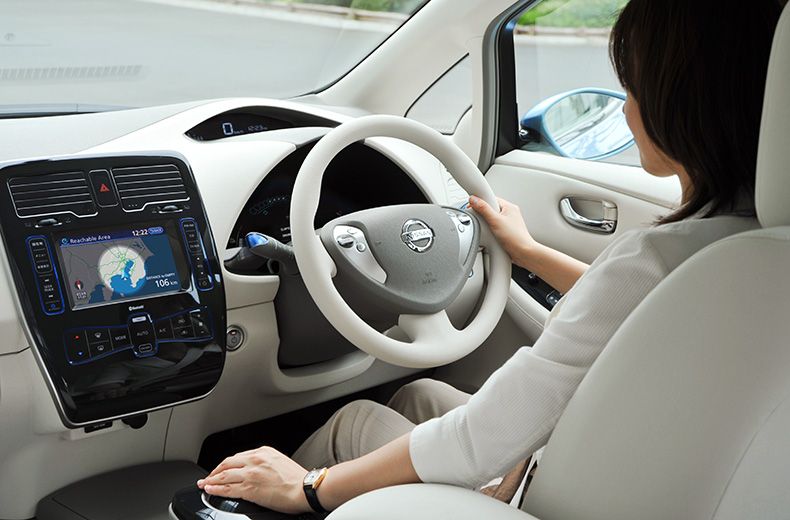
Do electric cars make a sound?
Yes. Under EU legislation, from 1 July 2019 all car manufacturers have to fit an artificial noise system to EVs to warn pedestrians they are approaching. You'll notice a whirring or sci-fi humming sound emitted by an external speaker.
Still, extra care is needed when manoeuvring and driving at low speeds because they're pretty quiet even with this system in place. Don't expect all pedestrians to hear you and move out of your way.
As speeds increase, wind and tyre noise will become the most noticeable elements inside the car, due to the absence of engine sound. However, EVs are still more refined than their internal combustion engine (ICE) equivalent as a general rule.
- Electric car leasing explained – EV financing vs buying
- Buy a car with RAC confidence with RAC Cars
- Electric cars – a definitive guide and tips for buyers
Can I take my driving test in an electric car?
Yes, you can take the driving test in an EV, but doing so will result in you getting an automatic-only licence. This means your licence will only allow you to drive automatic cars in the future - you'll need to take another test if you want to drive a manual petrol or diesel car.
There are also presently no practical differences in terms of the test procedure or questions, but both these provisos may change in future.
What else do I need to know about driving an EV?
Before setting off on a long journey, planning your route is more important with an electric car. This is crucial for road trips or holidays where you'll travel far away from home.
Because of their batteries, EVs are generally heavier than ICE cars, which can impact the way they feel in the bends. Of course this matters less in more family-oriented or luxury models.
The layout of some electric cars is also different. There may be motors at the front or back, or both if the car is all-wheel drive. If the motor is at the rear, with no engine to accommodate, there might be extra luggage space under the bonnet (Tesla calls that the ‘frunk’).
An EV’s batteries are usually beneath the floor, with the charging cable kept under the boot floor or in a bespoke bag.
Get used to an electric car and most ICE vehicles may feel noisy and needlessly complicated. The greater challenge won’t be how to drive an EV itself – this is very straightforward – but the change in mindset around charging and preserving range.
- Don’t be stranded – electric car breakdown cover from the RAC
- Make EV charging easier with the RAC home charge point installation service
- The costs of running an electric car
- Windscreen repair

